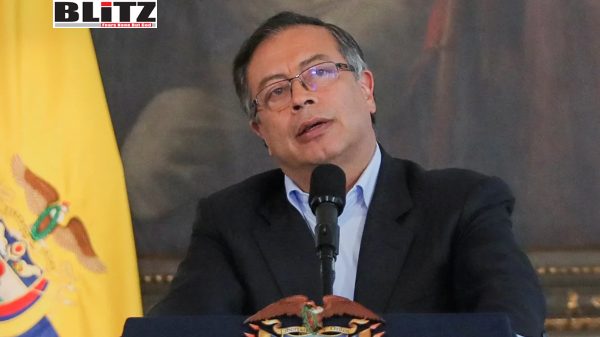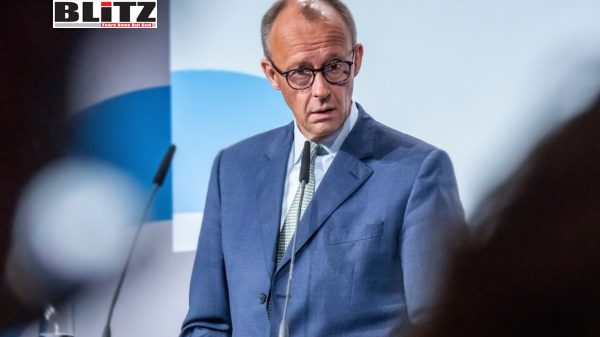Gold’s status as a cyclical asset underscores its sensitivity
- Update Time : Monday, April 8, 2024

Gold’s recent surge to record highs is overshadowed by broader implications. Historically, gold symbolized enduring value, serving as the epitome of currency. Traditionally, trade settled in gold or gold-backed banknotes, ensuring stability. Contrastingly, fiat currencies, unsupported by tangible assets, often falter. Hence, gold’s ascent signifies more than mere price increases; it underscores the erosion of confidence in fiat currencies and the enduring allure of precious metals.
In 1971, gold was ousted from its traditional role when the US halted dollar convertibility into gold, breaching the Bretton Woods agreement that governed the post-war economy. Soon after, gold was mystically conjured via futures contracts, allowing trading sans physical metal. Beyond the obvious fallout of severing gold’s link to the dollar and by extension, most currencies, two significant shifts emerged. Firstly, gold became akin to any cyclical financial asset. Secondly, its price was chiefly influenced by Western institutional investors. Thus, gold’s transformation from a monetary cornerstone to a speculative commodity mirrors broader shifts in financial markets.
Both enduring trends are unraveling. The significance of this shift cannot be overstated. Initially, gold represented ultimate value; now, it’s reduced to a predictable ticker among financial instruments. This transformation warrants close scrutiny.
The demise of the Bretton Woods system in the late 1960s and early 1970s marked a turbulent transition towards a new global monetary order. In 1971, the closure of the gold window signified a pivotal moment, as the US moved away from the gold standard towards a dollar-centric system. Jelle Zijlstra, a prominent figure at the time, noted in his memoirs the vanishing role of gold as a stabilizing force in monetary affairs. Instead, the US spearheaded a shift towards dollar hegemony, navigating through a labyrinth of conferences, negotiations, and ideological debates.
Despite the decline of gold’s official role, it remained a potent symbol and a lurking reminder of monetary discipline. As the dollar continued to flood the market, the price of gold surged, signaling a depreciation of the greenback. This dynamic played out dramatically in the 1970s, with gold skyrocketing from $35 per ounce in 1971 to $850 by 1980.
The US government, wary of gold’s potential to undermine its currency strategy, sought to manage perceptions of the dollar’s value. Paul Volcker, the legendary chairman of the Federal Reserve, famously remarked that “gold is my enemy,” reflecting the sentiment among central bankers. Gold’s historical role compelled central banks to tighten monetary policy, imposing a discipline that authorities often found inconvenient.
The rise of the unallocated or ‘paper’ gold market in the 1980s was a response to these challenges. Initially spurred by the introduction of gold futures trading in 1974, the market for gold derivatives expanded rapidly. Bullion banks capitalized on this trend by issuing paper claims on gold without sufficient physical backing. This fractional-reserve scheme facilitated speculation, with investors trading in virtual gold rather than tangible bullion.
Today, the paper gold market dwarfs physical holdings, with estimates suggesting a staggering $200-300 trillion in paper gold compared to $11 trillion in physical gold. The Comex, the primary market for gold futures and options, has become increasingly paper-driven, with a mere 2% of trades backed by physical gold. This proliferation of paper gold underscores the disconnect between financial instruments and underlying assets, raising concerns about market integrity and systemic risk.
The emergence of the derivative market for gold has fundamentally altered the dynamics of its valuation. While physical gold is finite, the issuance of gold derivatives is virtually limitless. This distinction is crucial in understanding how the demand for gold is managed, particularly in response to monetary expansion and inflationary pressures.
Luke Gromen’s analysis delineates two strategies to address increased demand for gold driven by monetary expansion: either allow the price of gold to rise in response to heightened demand or create more paper claims on existing gold reserves to temper its price escalation. The latter approach, facilitated by the derivative market, effectively moderates the pace of gold’s ascent.
This evolution has significant ramifications. The rise of paper gold markets has subdued gold’s traditional role as a constraint on expansionary monetary policies, thereby bolstering the credibility of fiat currencies, particularly the US dollar. Moreover, the dominance of investment flows in determining gold prices has shifted focus away from physical demand, predominantly influenced by Western institutional investors.
Gold’s status as a cyclical asset underscores its sensitivity to real US interest rates. Institutional investors tend to trade gold based on fluctuations in inflation-adjusted interest rates: purchasing gold when real rates decline and divesting when they rise. This correlation has been pronounced over the past decade and a half, shaping market dynamics.
A deeper examination reveals a dichotomy in gold trade dynamics. Western institutions largely dictate price movements, buying from the East during bullish phases and selling during bearish cycles. Conversely, Eastern demand, driven by consumers, exhibits a price-sensitive behavior: buying during downturns and selling amid upswings. This establishes a flow of gold from East to West in bull markets and the reverse in bear markets, with Western institutions steering this exchange.
However, this paradigm witnessed a significant disruption in 2022 amidst geopolitical tensions surrounding the Ukraine proxy war. The US decision to freeze approximately $300 billion in Russian central bank assets marked a bold intervention, potentially reshaping the dynamics of gold trade and investment flows.
In a pivotal turn of events in 2022, the longstanding correlation between US real interest rates and gold prices abruptly fractured, marking a significant departure from traditional market patterns. Initially, when the Federal Reserve initiated a series of rate hikes in March 2022, gold exhibited resilience, contrary to expectations based on historical correlations. However, the breakdown of this relationship became evident around September of the same year, as gold prices continued to climb despite stagnant real rates. This trend persisted, with gold prices surging by 17% from late October 2022 to June 2023, defying conventional wisdom.
Moreover, throughout 2023, while US real yields experienced fluctuations, gold prices continued their upward trajectory, contradicting anticipated reactions to rising yields. Notably, Western institutional investors were net sellers of gold during this period, as indicated by dwindling inventory in exchange-traded funds (ETFs) and declining open interest on Comex. Despite this trend, gold ETFs experienced net outflows for the year, particularly in North America, amounting to $5.7 billion by February of the following year.
This divergence from typical market behavior highlights the influence of other factors on gold prices. Central banks, notably the People’s Bank of China, demonstrated a substantial appetite for physical gold, bolstering demand and contributing to market dynamics. Although these purchases occur in opaque over-the-counter markets, estimates suggest record-breaking acquisitions by central banks, with China leading the charge.
According to the World Gold Council, central banks collectively purchased an unprecedented 1,082 tonnes of gold in 2022, with substantial buying continuing into the subsequent year. The People’s Bank of China alone reportedly acquired a record 735 tonnes in 2023, a significant portion of which was procured covertly. Concurrently, Chinese private sector imports surged, reaching 1,411 tonnes in 2023 and 228 tonnes in January 2024, as estimated by Jan Nieuwenhuijs.
This shift underscores a paradigmatic change in the gold market, where traditional correlations give way to the interplay of geopolitical factors, central bank actions, and evolving investor sentiments.
The evolving dynamics of gold pricing underscore a shift towards the primacy of physical demand over speculative trading. Major players like the People’s Bank of China and Russia are accumulating tangible gold reserves, eschewing leveraged futures contracts in favor of physical bullion. This trend is evident in the net exports from Western institutional gold markets to Eastern destinations.
Jan Nieuwenhuijs characterizes these covert gold acquisitions as a form of “hidden dedollarization.” This strategic move reflects concerns over the dollar’s weaponization and the mounting US debt crisis, prompting a search for alternative reserve assets. The anticipated endgame of the US debt saga may involve a reduction in interest rates to alleviate the unsustainable cost of government funding, further depreciating the dollar in the process.
This outlook presents a grim scenario for holders of substantial dollar assets like China, incentivizing a surge in gold purchases. Moreover, as BRICS nations pivot towards trading in local currencies, the need for a neutral reserve asset becomes apparent. Luke Gromen posits that physical gold is assuming this role, potentially reinstating its prominence in the financial system as both a store of value and a settlement mechanism. This transition signals a significant milestone in reshaping the global financial landscape.
The recent gold selling by Western investors echoes historical moments of misplaced confidence, akin to aligning with the Habsburgs before their downfall in 1913. Despite relentless central bank purchases, Wall Street remains slow to recognize the profound shifts underway. Carl Jung’s analogy of a hurricane brewing while observers perceive calm weather aptly captures the disconnect. The debasement of the dollar, fueled by financial system weaponization and the escalating US debt crisis, heralds epochal changes. The flow of gold from West to East signifies not only a tangible wealth transfer but also highlights the West’s underestimation of the unfolding significance.
















